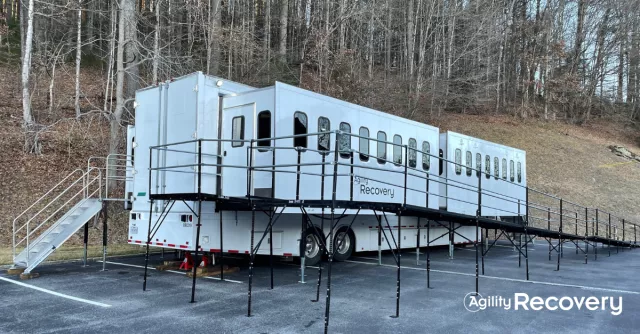How Should Businesses Respond if COVID-19 Returns

Will it ever be business as usual ever again? Although it is far from over, the COVID-19 global pandemic has impacted how we all live and work for the foreseeable future. That means businesses have adapted, too, to thrive and grow post-pandemic.
Much of the immediate response from the business sector in March 2020 and the early days of the pandemic was mandated by government and public health officials. They closed borders, shut down travel, and implemented shelter in place and work from home protocols. Despite the unprecedented nature of the shift, many businesses quickly adapted. Team meeting apps and video conferencing platforms soared in popularity, as employees traded in conference rooms for conference calls. In retail, in an example of quick pivoting, companies almost immediately began replacing shuttered brick-and-mortar storefronts with online sales platforms. Digital products were emphasized over physical products, and alternative supply chains were identified to protect at least a percentage of revenues. Some companies flourished as a result and then struggled to keep up with sudden, new customer demand.
As restrictions ease, companies are getting back to business in new ways. But smart managers are also looking to the future, with the idea that COVID-19 and other pandemics may return sooner than later.
Most experts agree that until a vaccine is widely available, COVID-19 will be sticking around. And although public health officials currently fear spikes in infection rates as the economy re-opens (and we are seeing their fears come to pass with rising infection rates in Texas, North Carolina and Arizona), they are also looking ahead to a likely second wave in the fall, one that could overlap with flu season.
In a recent CNN health report, reporter Nicole Chavez quoted the director of the National Institute of Allergy and Infectious Diseases, Dr. Anthony Fauci saying, "I'm almost certain it will come back because the virus is so transmissible and it's globally spread." At an Economic Club of Washington webinar earlier in the week, Fauci speculated that Americans could be in for "a bad fall and a bad winter" if the country went unprepared.
When, not if, seems to be the prevailing thinking about COVID-19's return. So the present moment of getting back to whatever new normal can be achieved is also the best time for some strategic preparation.
The building blocks of conventional resilience planning
Most large companies have plans in place in the event of disruptions. Business continuity and disaster recovery (BCDR) is a set of protocols and processes used to help organizations cope with a disaster and continue or resume routine business operations once the immediate crisis is past. These types of plans are generally developed to address short-term catastrophic events such as power outages, cyberattacks, or geopolitical unrest that can disrupt the supply chain and regional outposts.
For most companies, pandemic planning has been a lower priority due to its lower probability. The accepted wisdom of that lower probability was never statistical. Rather it was a risk collectively taken in defiance of available evidence. Now we've all seen first-hand what the new reality around global pandemics looks like, and the potentially devastating consequences, for public health and for the economy, of being underprepared.
Why traditional resilience planning falls short during a pandemic
The simple difference between conventional BCDR planning and pandemic planning is largely one of scale and duration. Pandemics affect more people, in more places, for longer. Therefore, pandemic planning, or an overall BCDR plan that includes the possibility of a global pandemic or local outbreak, requires unique consideration. Government resources were developed at the time of H1N1, avian flu and SARS. Businesses can use them to develop a plan and policies that can apply during subsequent pandemic waves. Recently, the Harvard Business Review published a suite of reports on various aspects of business and pandemic planning. Our team at Agility Recovery has developed coronavirus preparedness toolkit that can serve as a starting point for adapting a BCDR for any size business from start-up to a large corporation.
Plan better for an uncertain future
The second wave of COVID-19 and other pandemics that may occur in the future will be met with more information and tactical resources than the first. As states, cities, and countries re-open with caution, small and large businesses must also take the time to prepare. Don't wait until the panic of a second or third wave strikes. Here are a few practical considerations to address alongside the excitement of returning to regular work routines.
Apply a people-first approach
According to Compliance Week, effective pandemic planning requires a people-first approach. Staff is any company's most valuable resource, and pandemics are events with intensely personal consequences. Businesses should not only consider the re-deployment of personnel, but they also need to support staff who may be ill, or who live in intense areas of infection and staff who continue to work. That support may include access to public and mental health information, testing and screening, services such as transport or childcare, or access to educational resources. Update employee leave policies to accommodate a pandemic, including sick leave, unpaid leave, making sure they align with state and federal laws. Identify non-essential workers who may be laid off; identify core managers for keeping things going during a crisis.
To ensure that all of your employees are well and receive timely critical information, companies need to implement an emergency notification and incident management system and test it regularly. Besides that, companies should deliver pandemic-related business continuity training to enhance employee preparedness and alleviate any concerns.
Plan for operational segmentation and vendor reassessment
What are the criteria for ceasing operations altogether, and what are the protocols that will accompany such a temporary closure? Conversely, what is the plan for re-opening after a closure? Health measures, cleaning, and security should all factor into the closure and eventual re-opening of any physical plant or locations. How can operations be further streamlined to accommodate disruptions? What constitutes a skeleton crew?
A pandemic can have drastic outcomes in impacted areas and geographies, making them inaccessible for an extended time. As part of their business impact analysis (BIA), companies need to identify the framework of operations, along with interdependencies (e.g., people, process, technology, data, facilities, third parties) and potential impacts, to inform possible mitigation strategies.
With a pandemic planning in mind, companies should pay closer attention to the geography of these critical activities and functions and segment them for work transfer to alternative sites. As rigorous risk management and to the extent possible, companies should look to diversify supplier base, customers, and vendors to avoid single points of failure and increased exposure due to regional outages and geopolitical events.
Evaluate compliance readiness
Anticipate how compliance around health and safety protocols may be well out of the ordinary. Does your business require face to face interaction with customers? By what means will that be replaced? Will you have to provide personal protective equipment (PPE) for staff? How will these supplies be procured and when?
Update your resilience plan according to a systemic nature of pandemics
Organizations must examine and expand the boundaries for traditional business resilience plans to prepare for pandemic events. During a pandemic, some of the conventional strategies such as work transfer to nearby alternate sites, relocation of the workforce, and staff augmentation may not be viable options as employees and alternative locations may be just as impacted by the event. In this case, investing in technology and infrastructure to support work from home and virtual collaboration can become your company's temporary strategy.
Stay in touch with clients
People tend to be understanding and empathetic to the operational disruption that is beyond a company’s control during a regional event or other crisis. However, they expect transparency and timely updates.
Companies must immediately alert clients of any business interruptions and continue to communicate with them through various channels to anticipate any concerns. Customers may have specific questions about a company’s supply chain, especially if resources are located in impacted areas.
Additionally, organizations may consider contacting affected customers to check in on their safety and offer assistance if necessary.
Ensure continuous and complex testing
To evaluate their readiness and response to business disruption, organizations must advance their existing business continuity testing scenarios. Scenarios can include extended periods of power outages, a complete shutdown of a main operational facility, increased absenteeism, and others.
Also, businesses must include their leadership team in crisis management governance and delegate their authority at least two levels down from primary decision-makers. It's also a good practice to invite critical third parties in tabletop simulations to gain a better understanding of interdependencies and estimate the effectiveness of their resilience plans.
Establish security measures
Create duplicate digital records of essential business documents so they can be accessed remotely. These might include business licenses, articles of incorporation, agreements, bylaws, a corporate seal, minutes and resolutions from official meetings, tax records, insurance policies, software registration numbers, vendor lists, employee directories, and signatures. Staff may need to access this documentation for any number of reasons including new modes of banking, payroll, and applications for government relief and recovery programs. If your company hasn't already done so, move critical data onto secure cloud servers, and set up automated systems for keeping the data updated regularly.
As with any disaster, the COVID-19 pandemic offers businesses an opportunity to streamline their operations and bolster BCDR plans in ways that will strengthen the company regardless of what happens in the future. Managers and company policy developers should take this moment and use it wisely. The first pandemic wave hit so hard and so fast it sparked largely reaction; the lull before the second wave should be all about proactivity.



